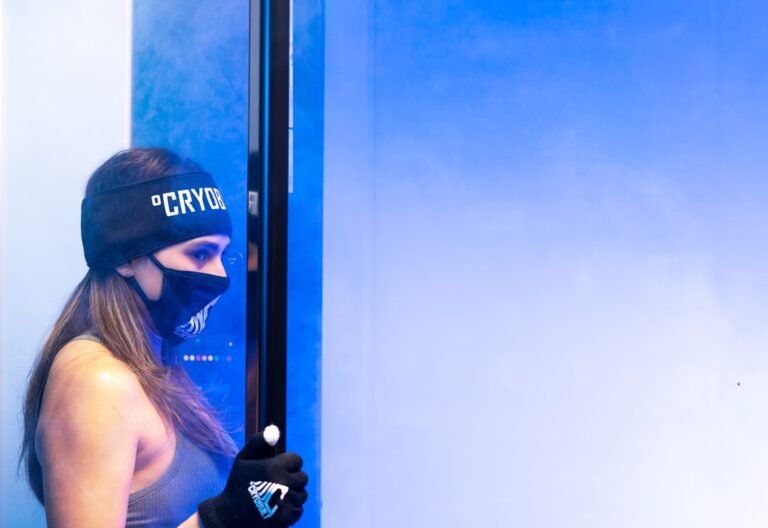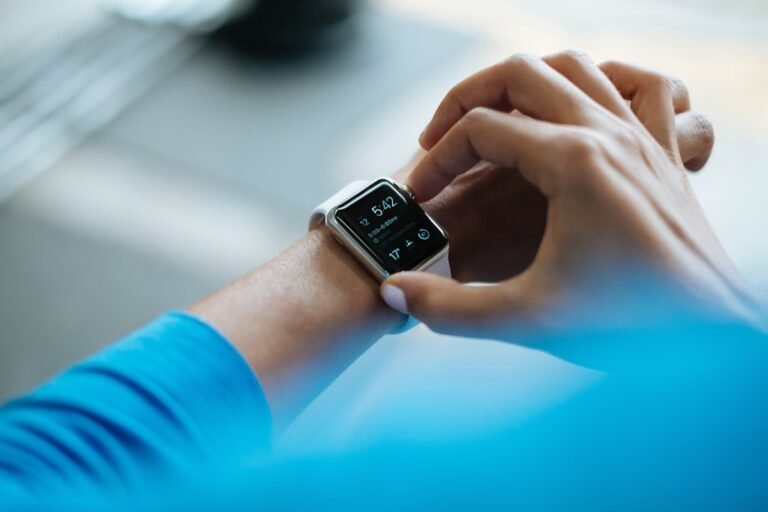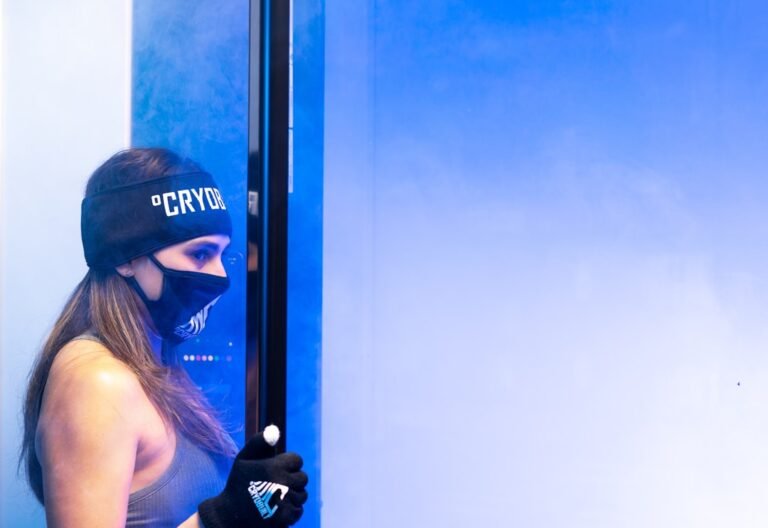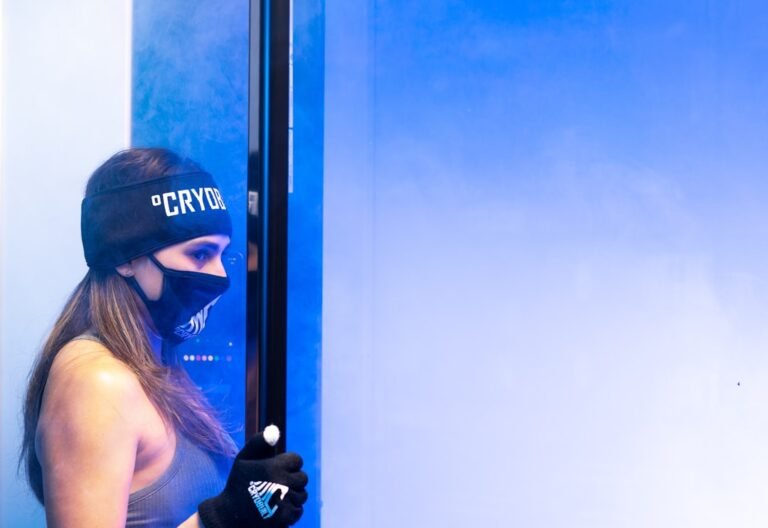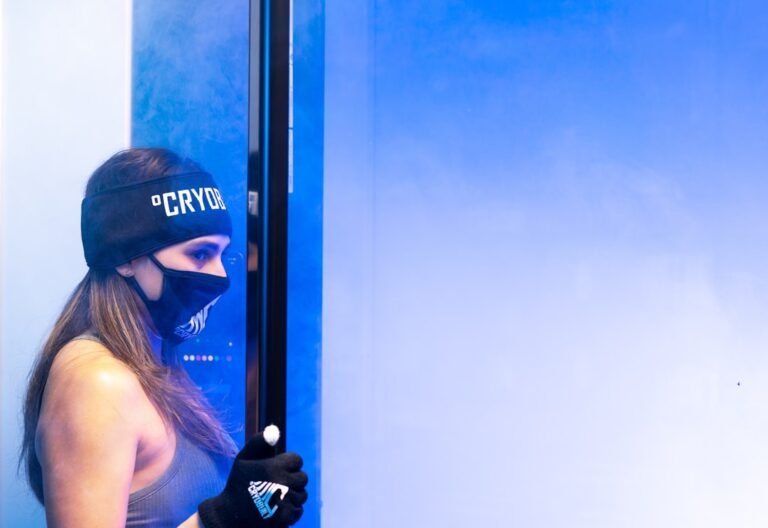From Ancient Times to Modern London: The Journey of Cryotherapy
Cryotherapy, derived from the Greek words “cryo” meaning cold and “therapy” meaning treatment, is a medical procedure that involves exposing the body to extremely cold temperatures for therapeutic purposes. This treatment has been used for centuries, with its roots dating back to ancient civilizations. The Egyptians, for example, used cold therapy to treat injuries and reduce inflammation. Similarly, the Greeks and Romans used ice and snow to alleviate pain and promote healing.
Summary
- Cryotherapy has historical roots dating back to ancient civilizations such as the Greeks and Egyptians.
- Cryotherapy has emerged as a popular trend in modern medicine, particularly in sports and fitness.
- Cryotherapy works by exposing the body to extreme cold temperatures, triggering a range of physiological responses.
- Cryotherapy has been shown to have numerous physical and mental health benefits, including reducing inflammation and improving mood.
- Cryotherapy is becoming increasingly popular in London, with a variety of treatments available and ongoing advancements in the field.
The Emergence of Cryotherapy in Modern Medicine
In modern medicine, cryotherapy has gained popularity as a non-invasive treatment option for various conditions. It is commonly used in dermatology to remove skin lesions such as warts and moles. Cryotherapy is also used in the field of oncology to freeze and destroy cancer cells. Additionally, it has been found to be effective in reducing pain and inflammation in conditions such as arthritis and fibromyalgia.
The development of cryotherapy technology has played a significant role in its emergence in modern medicine. The invention of liquid nitrogen, which can reach temperatures as low as -320 degrees Fahrenheit (-196 degrees Celsius), has made it possible to achieve the extreme cold temperatures required for cryotherapy. This breakthrough has allowed for more precise and controlled treatments, leading to improved outcomes for patients.
Cryotherapy in Sports and Fitness: A Revolutionary Trend
In recent years, cryotherapy has gained popularity among athletes and fitness enthusiasts as a way to enhance performance and aid in recovery. Whole body cryotherapy involves exposing the entire body to extremely cold temperatures for a short period of time, typically 2-3 minutes. This treatment is believed to reduce muscle soreness, speed up recovery time, and improve overall athletic performance.
The benefits of cryotherapy for athletes are numerous. The extreme cold temperatures cause blood vessels to constrict, which helps reduce inflammation and swelling in the muscles. This can lead to faster recovery times and improved muscle function. Cryotherapy also stimulates the release of endorphins, which are natural painkillers, providing athletes with a natural high and increased pain tolerance.
The Science Behind Cryotherapy: How It Works
Cryotherapy works by exposing the body to extremely cold temperatures, typically between -200 to -300 degrees Fahrenheit (-129 to -184 degrees Celsius). The process involves stepping into a cryotherapy chamber or booth, where liquid nitrogen is used to cool the air around the body. The treatment typically lasts for 2-3 minutes.
The extreme cold temperatures cause blood vessels to constrict, which reduces inflammation and swelling in the muscles and joints. This can lead to pain relief and improved mobility. Additionally, the cold temperatures stimulate the release of endorphins, which are natural painkillers that can provide a sense of euphoria and increased pain tolerance.
The Benefits of Cryotherapy for Physical and Mental Health
Cryotherapy offers a range of physical and mental health benefits. On a physical level, cryotherapy can help reduce pain and inflammation, improve muscle recovery, and enhance athletic performance. It has also been found to be effective in treating conditions such as arthritis, fibromyalgia, and migraines.
In terms of mental health, cryotherapy has been shown to have mood-enhancing effects. The release of endorphins during cryotherapy can help alleviate symptoms of depression and anxiety. Additionally, the extreme cold temperatures can stimulate the production of norepinephrine, a neurotransmitter that plays a role in mood regulation.
The Growing Popularity of Cryotherapy in London
Cryotherapy has experienced a surge in popularity in London in recent years. Many wellness centers and spas now offer cryotherapy or ice bath treatments as part of their services. The rise in popularity can be attributed to several factors.
Firstly, London is a city known for its fast-paced lifestyle and high-stress levels. Cryotherapy offers a quick and effective way to relieve stress and improve overall well-being. The mood-enhancing effects of cryotherapy can help Londoners cope with the pressures of city life.
Secondly, London is home to a large number of athletes and fitness enthusiasts. Cryotherapy has become a popular tool for athletes looking to enhance their performance and aid in recovery. The benefits of cryotherapy for athletes, such as reduced muscle soreness and improved recovery times, have made it a sought-after treatment in the fitness community.
The Different Types of Cryotherapy Treatments Available in London
In London, there are several types of cryotherapy treatments available. The most common is whole body cryotherapy, which involves exposing the entire body to extremely cold temperatures for a short period of time. This treatment is typically done in a cryotherapy chamber or booth.
Localized cryotherapy is another option, which involves targeting specific areas of the body with cold temperatures. This can be done using a handheld cryotherapy device or by applying ice packs to the desired area.
Cryofacial is a type of cryotherapy treatment that focuses on the face. It involves applying cold temperatures to the skin using a specialized cryotherapy wand. This treatment is believed to improve skin tone, reduce wrinkles, and promote collagen production.
The Safety and Risks Associated with Cryotherapy
While cryotherapy is generally considered safe, there are some safety precautions that need to be taken. It is important to ensure that the treatment is administered by trained professionals who understand the proper protocols and safety measures.
One potential risk of cryotherapy is frostbite or cold burns. This can occur if the skin is exposed to extreme cold temperatures for too long or if there is direct contact with liquid nitrogen. It is important to follow the recommended treatment times and avoid touching any metal surfaces inside the cryotherapy chamber.
Another potential risk is hypothermia, which can occur if the body is exposed to extremely cold temperatures for an extended period of time. It is important to monitor the body’s temperature during cryotherapy and to exit the chamber if any signs of hypothermia, such as shivering or confusion, are present.
The Future of Cryotherapy: Advancements and Innovations
The future of cryotherapy looks promising, with advancements and innovations on the horizon. One area of development is the improvement of cryotherapy technology. Researchers are working on developing more advanced cryotherapy chambers and devices that can provide more precise and controlled treatments.
Another area of focus is the development of cryotherapy treatments for specific conditions. Researchers are exploring the use of cryotherapy in the treatment of chronic pain, autoimmune disorders, and even mental health conditions such as depression and anxiety.
The Enduring Legacy of Cryotherapy in London and Beyond
Cryotherapy has a long history and has evolved into a popular treatment option in modern medicine and wellness. Its ability to reduce pain, inflammation, and promote overall well-being has made it a sought-after treatment in London and beyond.
As cryotherapy technology continues to advance and more research is conducted, the potential for cryotherapy to revolutionize medicine and wellness is immense. With its wide range of physical and mental health benefits, cryotherapy has the potential to improve the lives of many individuals and continue to be a valuable tool in healthcare.
FAQs
What is Cryotherapy?
Cryotherapy is a medical treatment that involves exposing the body to extremely low temperatures for a short period of time. It is used to treat various conditions such as inflammation, pain, and muscle soreness.
When was Cryotherapy first used?
Cryotherapy has been used since ancient times. The ancient Egyptians used ice to treat injuries and inflammation, while the ancient Greeks used cold water to treat various ailments.
How does Cryotherapy work?
Cryotherapy works by reducing inflammation and swelling in the body. When the body is exposed to extremely low temperatures, the blood vessels constrict, reducing blood flow to the affected area. This reduces inflammation and swelling, which can help to relieve pain and promote healing.
What are the benefits of Cryotherapy?
Cryotherapy has many benefits, including reducing inflammation, relieving pain, improving circulation, and boosting the immune system. It is also used to treat various conditions such as arthritis, fibromyalgia, and multiple sclerosis.
What are the risks of Cryotherapy?
Cryotherapy is generally considered safe, but there are some risks associated with the treatment. These include frostbite, skin burns, and hypothermia. It is important to follow the instructions of a trained professional when undergoing Cryotherapy.
How is Cryotherapy used in modern London?
Cryotherapy is used in modern London as a form of alternative therapy. It is used to treat various conditions such as sports injuries, arthritis, and chronic pain. It is also used by athletes to improve performance and speed up recovery time.


